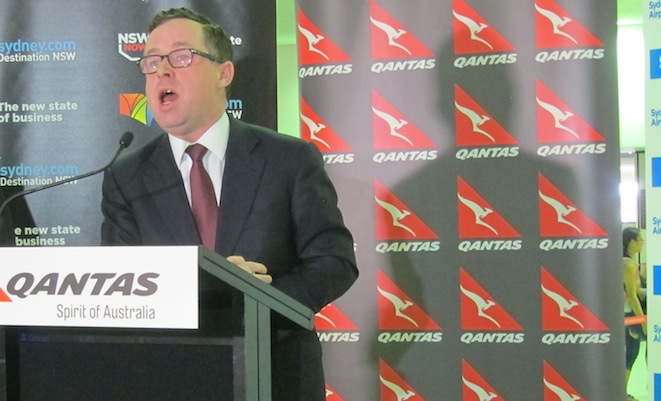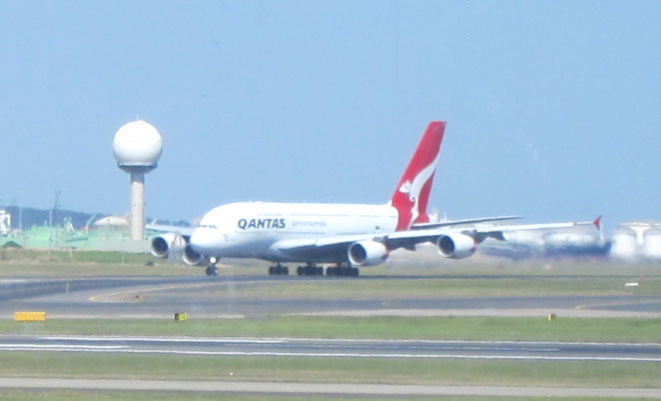
Qantas chief executive Alan Joyce says the falling Australian dollar is welcome news and will provide a boost to the airline’s improving international operations.
The local unit has fallen from about 97 US cents in October 2013 to a little over 87 US cents on Monday morning. Economists expected the currency to remain under pressure in the period ahead, as worries about China’s economic slowdown persisted and the US dollar continued to appreciate.
Joyce said Qantas’s “sweet spot” for the currency was around the low 80 US cents mark.
“It narrows the gap in terms of our competitive cost base with other international carriers and of course eventually it will help people to travel domestically and encourages more inbound travel,” Joyce told reporters at Sydney Airport on Monday.
Joyce, who was launching Qantas’s A380 flights to Dallas/Fort Worth, said overseas airlines grew capacity Down Under at twice the world average amid the stronger Australian dollar. As the currency softened that capacity growth has slowed, he said, benefiting the Qantas’s international operations and the airline’s bid to return its overseas flying back to profitability.
“For the last five months we have seen positive yield on our international business as a consequence of that,” Joyce said.
“We believe that this business is turning the corner. It is making growth opportunities where they exist and we are growing into a market that we see big potential for us in the future.”
The use of the A380 to Dallas/Fort Worth, replacing the Boeing 747-400ER that previously operated the route, was a “vote of confidence” in Qantas’s international operations, Joyce said.
“Qantas has never been as big as it is today in North America and we think that’s one of the big growth markets for us in the future,” Joyce said.

Elsewhere in the Americas the airline has planned capacity increases to Los Angeles and Santiago, Chile, as well as a return to Canada with six return services to Vancouver over January.
The use of additional services in times of peak demand, higher utilisation of its fleet and new codeshare partnerships – particularly in Asia – were among the key planks alongside cost cutting in Joyce’s bid to turn around Qantas International, which posted an underlying $497 million loss before interest and tax in 2013/14.
Joyce said Qantas’s Asian network was improving, with the market absorbing the extra capacity to Singapore when the Flying Kangaroo switched its mid-point stop from the city-state to Dubai for flights to London.
“You will see this year that it is filling,” Joyce said.
“We are seeing a lot more passengers using the Qantas network up into Asia. We are quite comfortable with how our Asian network is actually developing.”










